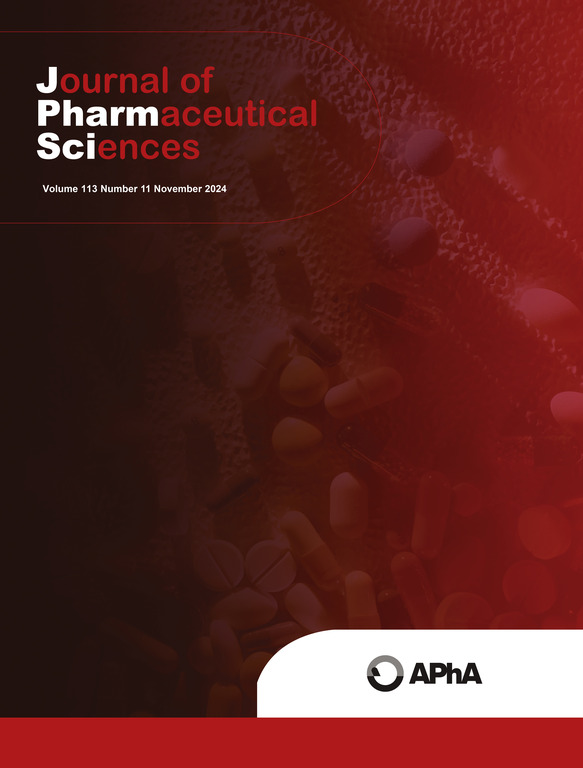应用紫外可见光谱仪研究溶解介质对小分子和蛋白质扩散性的影响。
IF 3.7
3区 医学
Q2 CHEMISTRY, MEDICINAL
引用次数: 0
摘要
迄今为止,常用的扩散系数测量方法都存在一些障碍,无法广泛应用于制药实验室。本研究旨在修改 di Cagno 等人基于紫外可见光谱仪开发的方法,并将其应用于研究溶解介质对小分子和蛋白质扩散系数的影响。本研究共对不同水介质和聚合物溶液中的五种小分子和两种蛋白质进行了研究。通过在标准紫外可见比色皿上安装一个带有开口缝隙的 3D 打印盖,入射紫外光只能通过开口缝隙来测量局部药物浓度。在扩散实验中,药物分子从比色皿底部向狭缝扩散。根据测量到的浓度与时间的函数关系,利用分析和数值方法,根据菲克扩散定律计算出扩散系数。结果表明,扩散系数可以精确测量,并且具有很高的重现性。结果还表明,不同介质对小分子扩散系数的影响小于 10%,对蛋白质的影响小于 15%。由于紫外可见光谱仪是一种常规仪器,这种方法有可能被许多制药实验室用于扩散系数的测量。本文章由计算机程序翻译,如有差异,请以英文原文为准。

Application of a UV-vis spectrometer to investigate the effect of dissolution media on the diffusivity of small molecules and proteins
To date, the commonly used methods for diffusion coefficient measurements have some hurdles that prevent them from being widely applied in pharmaceutical laboratories. This study aimed to modify a method developed by di Cagno et al. based on the use of a UV-Vis spectrometer and apply the method to investigate the effect of dissolution media on the diffusivity of small molecules and proteins. A total of five small molecules and two proteins in different aqueous media and polymer solutions were investigated in this study. By attaching a 3D-printed cover with an open slit to a standard UV-Vis cuvette, the incident UV light could only pass through the open slit to measure the local drug concentration. During the diffusion experiment, drug molecules diffused from the cuvette bottom to the slit. According to the concentration measured as a function of time, diffusion coefficient was calculated based on Fick's law of diffusion using the analytical and numerical approaches. As a result, diffusion coefficients could be accurately measured with high reproducibility. The results also suggested that different media could affect the diffusion coefficients of small molecules by < 10% and proteins by < 15%. Since the UV-Vis spectrometer is a routine instrument, this method can potentially be employed by many pharmaceutical laboratories for diffusion coefficient measurements.
求助全文
通过发布文献求助,成功后即可免费获取论文全文。
去求助
来源期刊
CiteScore
7.30
自引率
13.20%
发文量
367
审稿时长
33 days
期刊介绍:
The Journal of Pharmaceutical Sciences will publish original research papers, original research notes, invited topical reviews (including Minireviews), and editorial commentary and news. The area of focus shall be concepts in basic pharmaceutical science and such topics as chemical processing of pharmaceuticals, including crystallization, lyophilization, chemical stability of drugs, pharmacokinetics, biopharmaceutics, pharmacodynamics, pro-drug developments, metabolic disposition of bioactive agents, dosage form design, protein-peptide chemistry and biotechnology specifically as these relate to pharmaceutical technology, and targeted drug delivery.

 求助内容:
求助内容: 应助结果提醒方式:
应助结果提醒方式:


